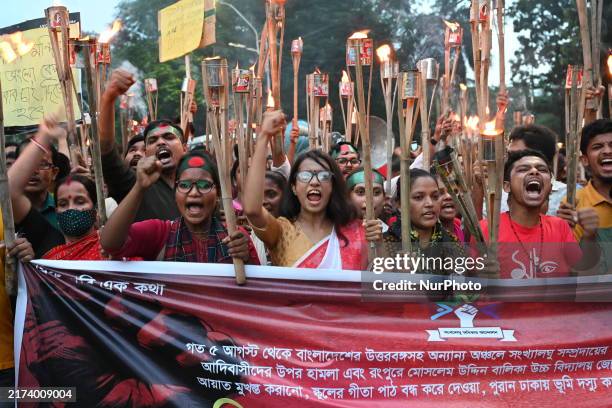
Hindu Minorities in Bangladesh: An In-Depth Analysis
Bangladesh, with its rich cultural and historical diversity, has long been a land of multiple ethnic and religious groups. Among them, Hindus represent the largest minority community. However, their existence in the Muslim-majority country comes with numerous socio-political, economic, and religious challenges. This article aims to provide a detailed, factual, and unbiased overview of the Hindu minorities in Bangladesh, addressing their demographics, contributions, and the challenges they face.
Demographics of Hindu Minorities in Bangladesh
According to the 2022 census, Hindus constitute approximately 7.95% of the total population of Bangladesh, which stands at over 165 million. This represents a significant decline from 1947 when Hindus made up around 28% of the population. The decrease can be attributed to a variety of factors, including migration, religious conversion, discrimination, and violence.
Key Statistics
- Population Trends: Hindus in Bangladesh numbered around 13.1 million in 2022, compared to 22 million in 1947.
- Geographic Concentration: Hindu communities are primarily concentrated in districts like Khulna, Jessore, Gopalganj, and Barisal.
Contributions of Hindus in Bangladesh
Hindus have made significant contributions to the cultural, economic, and political development of Bangladesh. Renowned figures like philosopher Ishwar Chandra Vidyasagar, economist Amartya Sen, and political leader Jogendra Nath Mandal hail from the Hindu community. Hindu temples, festivals such as Durga Puja, and classical art forms are integral parts of Bangladesh’s cultural landscape.
Economic Contributions
Hindu-owned businesses play a vital role in sectors like textiles, jewelry, and agriculture. Despite systemic challenges, many Hindus continue to contribute to the country’s GDP through entrepreneurship and labor.
Challenges Faced by Hindu Minorities in Bangladesh
1. Religious Discrimination and Violence
The Hindu community often faces religious intolerance and violence. Incidents of vandalism against temples, attacks during Hindu festivals, and forced conversions are reported frequently. For example:
- In October 2021, during the Durga Puja celebrations, over 80 Hindu temples and homes were vandalized following alleged blasphemous social media posts.
- The Bangladesh Hindu Buddhist Christian Unity Council recorded over 3,600 incidents of violence against religious minorities from 2013 to 2021.
2. Legal and Land Disputes
Hindus have been disproportionately affected by laws like the Vested Property Act (formerly the Enemy Property Act). This law allowed the government to seize property belonging to those deemed “enemies of the state,” predominantly affecting Hindus.
- Impact: By some estimates, Hindus lost 2.6 million acres of land between 1965 and 2006.
3. Social Marginalization
Hindu minorities often face social ostracization, with limited representation in government institutions and key decision-making processes. This lack of representation exacerbates their vulnerability to discrimination.
Specific Problems Faced by Hindu Minorities
Religious Problems
- Temple Desecration: Temples and idols are frequently desecrated. For example, over 100 temples were damaged during communal violence in 2013.
- Forced Conversions: Reports of forced conversions of Hindu women and girls persist, with limited legal recourse.
- Restrictions on Religious Practices: Public celebrations of Hindu festivals are often disrupted, and the community faces pressure to curtail its religious activities.
Social Problems
- Marginalization in Education: Hindu students often face discrimination in schools, limiting their access to quality education.
- Marriage and Family Issues: Hindu women are particularly vulnerable to abduction and forced marriages to members of the majority community.
Political Problems
- Underrepresentation: Despite their historical contributions, Hindus have minimal political representation. In the 2024 Parliament, only a handful of seats are occupied by Hindu legislators.
- Lack of Legal Protections: Laws are often inadequately enforced to protect Hindus, and perpetrators of violence frequently go unpunished.
Economic Problems
- Discrimination in Employment: Hindus face barriers in both the private and public sectors, often relegated to low-paying jobs.
- Land Grabs: Wealthy individuals and influential groups often target Hindu-owned lands, leveraging their minority status to avoid legal consequences.
- Poverty: Many Hindus live below the poverty line, making them even more vulnerable to exploitation.
Efforts to Address the Problems
- Legal Reforms:
- The repeal of the Vested Property Act in 2001 was a significant step, but implementation remains a challenge.
- Activists demand stricter laws against hate crimes and violence targeting minorities.
- Civil Society Advocacy:
- Organizations like the Bangladesh Hindu Buddhist Christian Unity Council and Ain o Salish Kendra actively document abuses and advocate for minority rights.
- International NGOs and human rights groups pressure the government to improve conditions for Hindus.
- Community Resilience:
- The Hindu community has shown resilience through grassroots initiatives, self-help groups, and cultural preservation efforts.
Conclusion
Hindu minorities in Bangladesh represent an integral part of the nation’s cultural and historical fabric. However, their existence is fraught with challenges that require urgent attention from the government, civil society, and international actors. Addressing issues like religious intolerance, social discrimination, and economic marginalization will not only improve the lives of Hindu minorities but also strengthen Bangladesh’s commitment to pluralism and human rights.
By fostering an environment of inclusivity and equality, Bangladesh can set an example as a progressive nation that values its diversity. The Hindu community, with its resilience and contributions, continues to aspire for a future where it can coexist peacefully and thrive alongside the majority.